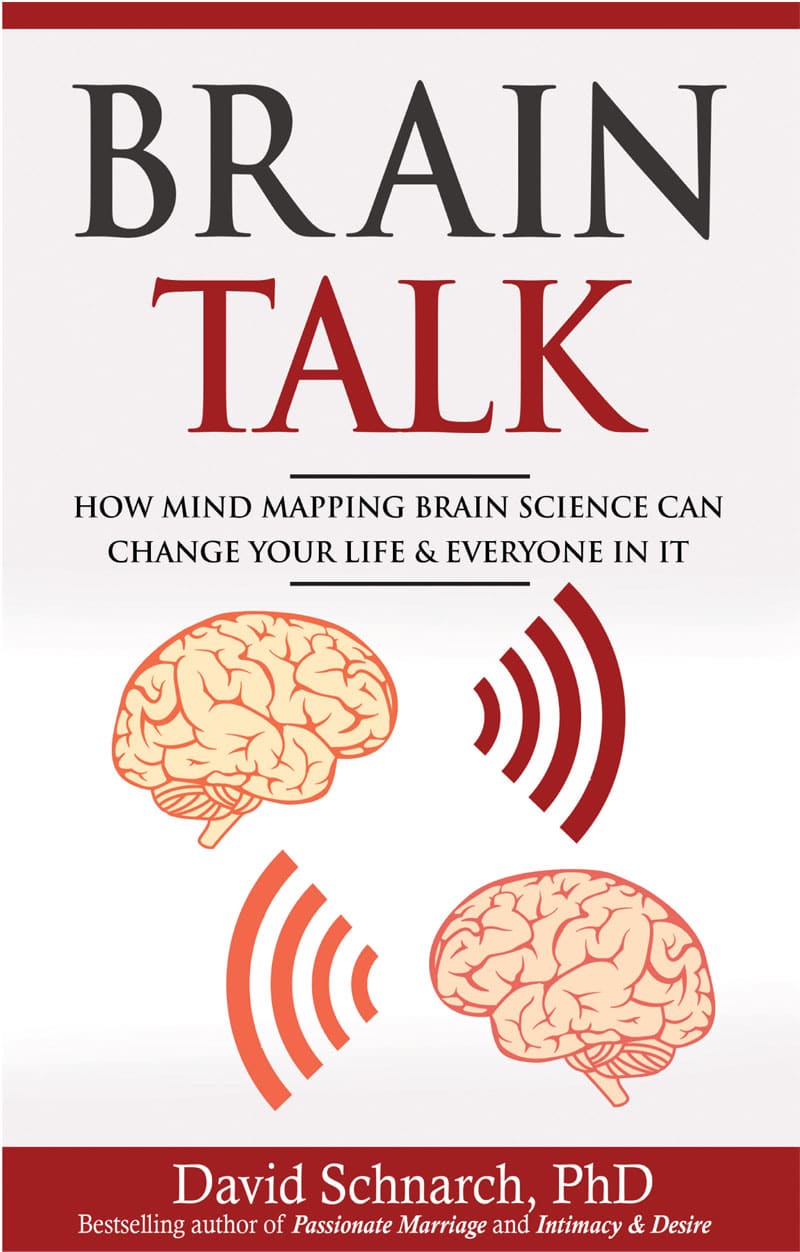The Brain Science Behind Mind Mapping
MIND MAPPING IS THE SCIENTIFIC BASIS of what people used to refer to as “folk psychology.” Folk psychology offered simple, direct explanations of our ability to predict other people’s behavior using everyday reasoning and basic assumptions about human nature. “People seek pleasure and avoid pain” is a good example of folk psychology. However, lots of research has been conducted on how your brain predicts what other people are going to do. In fact, it’s one of the hottest areas of modern brain science. We still have much to learn. But after reading hundreds of research articles, I’m thrilled by how much we actually know about how the brain pulls off this amazing feat.
Theory of Mind
The scientific origins of mind mapping can be traced to the article “Does the Chimpanzee Have a Theory of Mind?” published by two primatologists, David Premack and Guy Woodruff, in the journal Behavior Brain Science in 1978. They coined the term “Theory of Mind,” which refers to the realization that others possess beliefs and desires different from our own, and we can predict other people’s behavior by ascertaining what’s in their minds. Premack and Woodruff wondered if chimpanzees had mind-mapping ability (my term for Theory of Mind). To figure this out, they let a 14-yearold chimpanzee named Sarah watch a series of videos showing a man struggling with various problems (trying to get out of a locked cage, for example) followed by several photographs suggesting potential solutions to those problems (one photo showed a key). After Sarah consistently chose the correct photograph, Premack and Woodruff assumed she recognized the problem presented in the video, understood the man’s needs, and made a choice based on his mental state.
However because chimpanzees can’t talk, it’s difficult to ascertain their intentions with certainty. In another study, when prompted to locate a peanut hidden among several closed cups, chimpanzees choose randomly even when the researcher pointed to the one with the peanut. Whether or not chimpanzees have mind-mapping ability is still debated today.
Research took a great leap forward in the 1980s when child psychologists began studying mind-mapping abilities in infants and small children. The results were astonishingly clear and sometimes unexpected. For instance, famed child expert Jean Piaget had proposed that young children are so completely self-absorbed that they don’t show interest in other people’s minds until around age eight. However, study after study convincingly demonstrated that most children develop remarkable mind-mapping ability around the age of four.
Thanks to technological and scientific advances in recent years, there is now a strong foundation of mind-mapping research. But before I dive into the brain science behind mind mapping, here are three general facts you should know.
First, the role of mind mapping in a wide range of disorders has been studied using state-of-the-art MRI, fMRI, and PET brain scanners, from autism and schizophrenia to alcoholism and depression.
Second, the neurophysiology and neurochemistry of how the brain makes a mental map of another person’s mind is surprisingly well known. (At least I was surprised.) So much so, this has fueled the emergence of an exciting new field of brain science called interpersonal neurobiology, which explains how other people’s actions, thoughts, and feelings shape our brains—and vice versa—for better or worse.
Third, although mind-mapping ability is incredibly sophisticated, it is also extremely robust. It’s not easy to stop it. Although some brain injuries and a small group of diseases can impair mind-mapping ability, the vast majority of people have it. If you have to guess whether or not a complete stranger has mind-mapping ability, you’ll be right far more often than you’d be wrong if you presumed he did, at least until proven otherwise.
Mind Mapping is a Survival Skill
Where does our mind-mapping ability come from? What are its biological origins and evolutionary purposes? These questions go right to the heart of human nature, and the answers might surprise you.
Given mind mapping’s presence in humans and dogs––and to a lesser extent dolphins and elephants––you might assume its origins are mammalian. If you believe bonding is the primary drive wheel of human relationships (as proponents of attachment theory believe), this probably seems intuitive to you. You might assume the human brain developed the mind-mapping ability to facilitate positive emotional connections between people. After all, mind mapping plays an integral role in empathy and compassion.
However, if you came to these conclusions, you’d be wrong. Mind mapping’s origins are actually reptilian. That’s right. This highly evolved ability, which seems so quintessentially human, in large part springs from the part of our brain we share in common with snakes, lizards, and frogs. And when you realize reptiles don’t bond with their sex partners or offspring like humans do, mind mapping’s original purpose becomes clearer: survival. Although mind mapping can facilitate human bonding, it’s primarily a survival skill.
Reptiles and amphibians have a primitive behavior-prediction system. Picture a frog sitting on a lily pad in a pond looking at all the other frogs around it. It tries to pick up information that might enhance its chances of survival. It wants to know: What are the other frogs eating? Should I be eating that too? Does that big frog keep looking at me because it wants to eat me or mate with me? Do I have to kill it, or are we going to have sex? (Sounds like some marriages, doesn’t it?) To divine answers to these questions, the frog relies on highly specialized brain cells that monitor two parts of other frogs’ bodies, their eyes and mouths. By tracking other frogs’ eyes and mouths, it can more or less predict what other frogs are going to do.
Likewise, when a snake corners a mouse, it tracks the mouse’s eyes to figure out which way the mouse is likely to run. Snakes who consistently guess wrong go hungry, and their chances of long-term survival go down. Your life probably doesn’t literally depend on your mind-mapping ability; but the health of your relationships with your spouse, children, parents and co-workers do. But if you’re in a physically abusive relationship with a human viper, your life could very well hinge on your mind-mapping ability at some point.
For years researchers generally accepted the idea that the human brain consists of three sub-brains: the “reptilian” portion in the back of your head, the “mammalian” part in the middle, and the uniquely human part, the prefrontal cortex, located in your forehead. It turns out you have cells in the reptilian portion of your brain that track other humans’ eyes and mouths. Whenever we look at another person’s eyes or mouth, those cells start firing, providing important data that help us predict what that person is going to do.
Other parts of your reptilian brain participate in your mind mapping system, as do entirely different portions as well. It’s a complex modular system distributed throughout your brain. Some mind-mapping processes, such as understanding sarcasm, involve your prefrontal cortex, the most highly evolved part of your brain. However, mind-mapping functions you might think of as fairly sophisticated—like detecting lying, for instance—are actually detected by your reptilian brain.
Rebecca Saxe, associate professor of cognitive neuroscience in MIT’s Brain and Cognitive Sciences Department, has devoted her entire career to studying a single part of the human reptilian brain called the temporoparietal junction (TPJ). As a graduate student, Saxe identified the TPJ as an important part of the brain’s mind-mapping system that helps you understand what other people are thinking and feeling. Saxe likened it to a modular, integrated computer chip that, among other things, detects lies. Detecting deception is a basic brain function that doesn’t involve sophisticated cognitive processes such as deductive logic. If someone lies or does something deceptive, it triggers cells in your reptilian brain and bam! You’re now on red alert!
The implications of this are important and far reaching. Mind mapping is very much (but not exclusively) a “bottom-up process,” emerging from the most primitive part of your brain, which explains how it is so robust. The profound implications of this will become more apparent in subsequent chapters, but I’ll point out several of them now. For one thing, this explains how people who grow up in highly destructive families still develop mindmapping ability. (I’ll tell you all about this in Chapter Four.) For another, this clarifies how children end up mapping out things in their parents’ minds they really don’t want to know. (We’ll cover traumatic mind mapping in Chapter Eight.)
But the final noteworthy implication concerns human nature and adult love relationships. Humans are wired to detect deception, lying, misdirection, and manipulation in parallel with our ability to deceive and manipulate. Does this facilitate stable, long-term bonding? On face value it doesn’t because who wants to be in a relationship with a deceptive, manipulative partner? Such relationships don’t offer much safety or security.
However, most married people acknowledge that “emergency lies” – your response, for example, to your wife’s asking you if her new dress makes her look fat—are a necessary component of long-term relationships. Same goes for “helping your partner see the wisdom of your position” when the two of you disagree, which is called social intelligence or manipulation, depending on whether you or your partner are doing it.
The sad truth is many people are only able to keep their relationships going by lying, deceiving, and manipulating. As I’ll explain next chapter, successful lying, manipulation and deception requires mind-mapping ability. Some of us need this to keep our partners in the dark or confused because they’d be out the door if they ever got an accurate picture of who we really are. If your marriage is supposedly monogamous but you’re having an extramarital affair, for instance, the only way you can keep your marriage together is through lies, deception, and manipulation. Almost half of all married men and women report extramarital affairs, and for them this is standard operating procedure to “preserve” their marriages.
This highlights the centrality of mind mapping in emotionally committed relationships and provides a stunning observation about human nature. I hope the irony isn’t lost on you. I started by saying humans didn’t evolve mind mapping to facilitate human bonding, in the “safety and security” sense so popular today. Mind mapping is a survival skill. It is value-neutral. You or your partner couldn’t hide an affair if you didn’t have mind-mapping ability. The same goes for being able to detect your partner is messing around. I frequently work with couples recovering from affairs, and I’m all too aware of how affairs erode relationships and frequently lead to divorce. So here’s what this comes down to: Mind mapping aids and abets affairs (and a panoply of other bad behaviors) which destabilize marriages. And mind mapping facilitates the lies and deceptions many people need to keep their relationships going. In his movie “The Invention of Lying” Comedian Ricky Gervais offers a sad and hilarious commentary on what relationships would be like if people couldn’t mask their minds from each other.
« Brain Talk – Chapter 1 Part 2 Brain Talk – Chapter 2 Part 2 »


